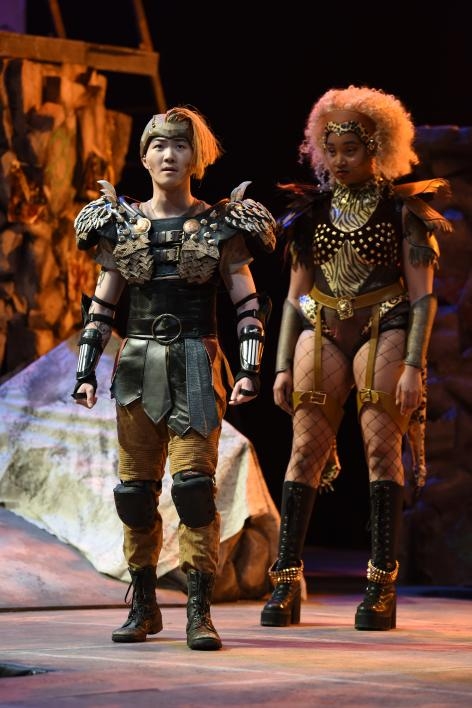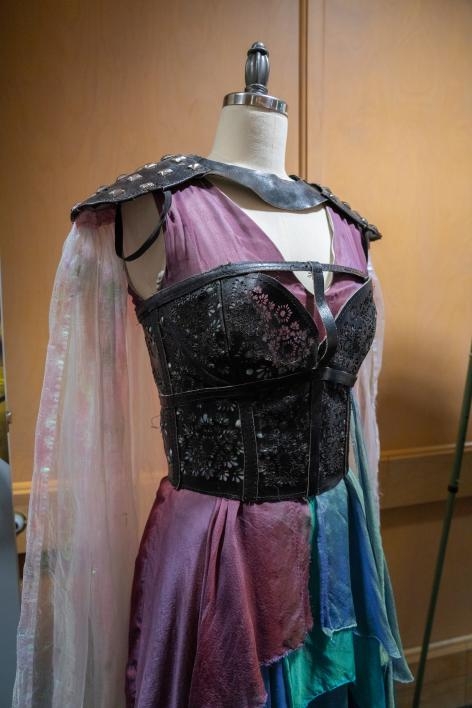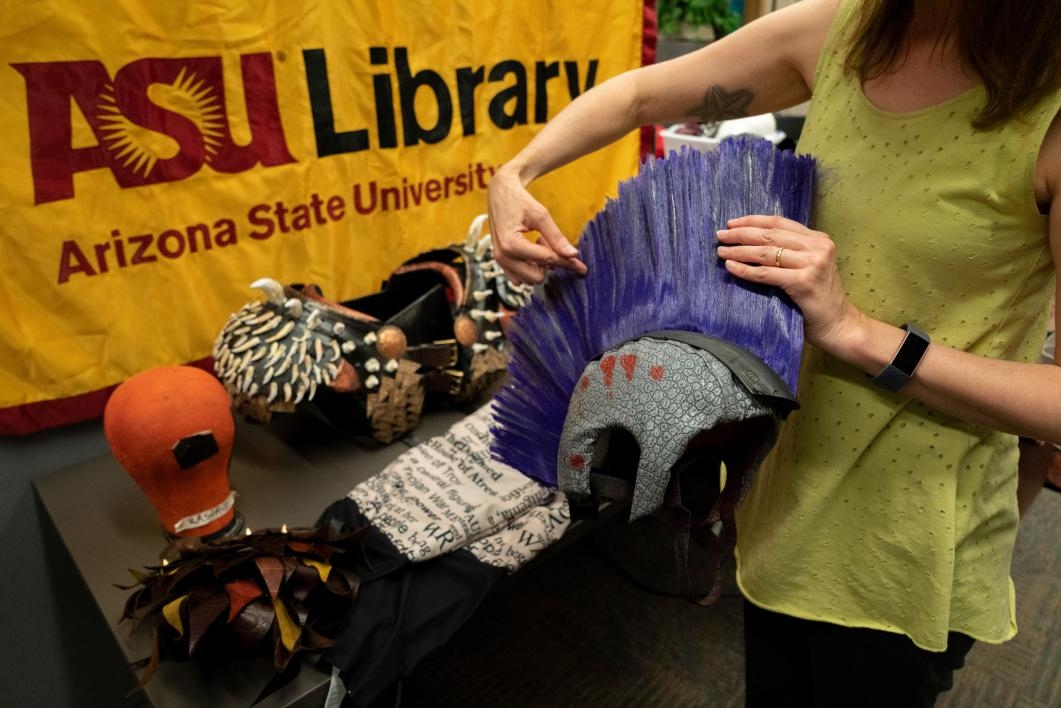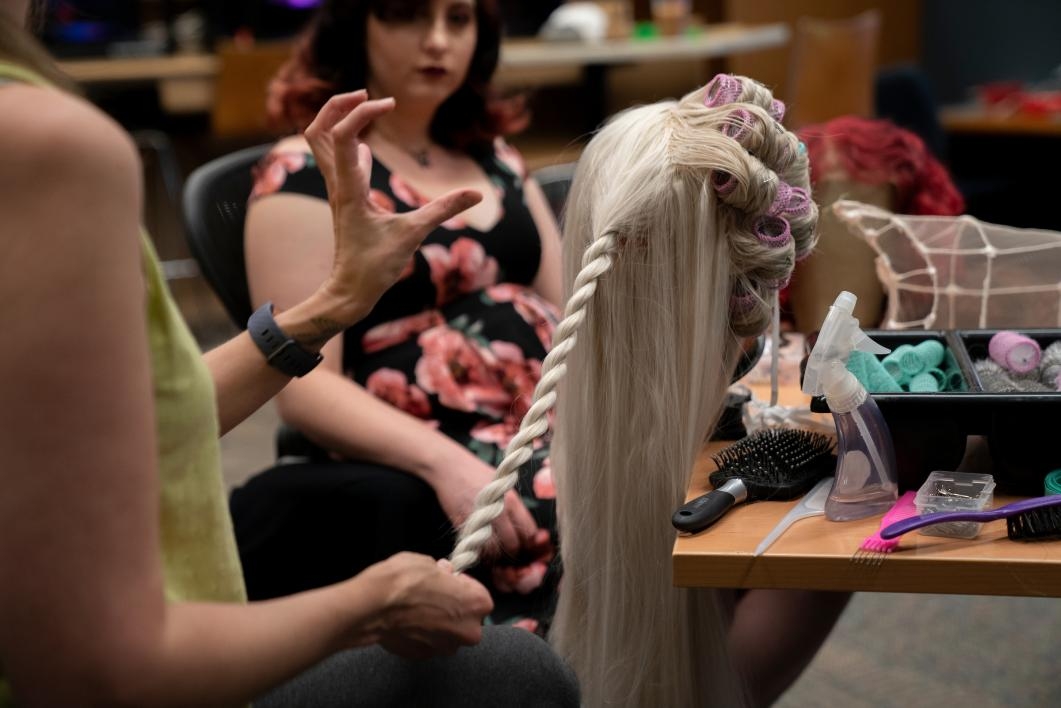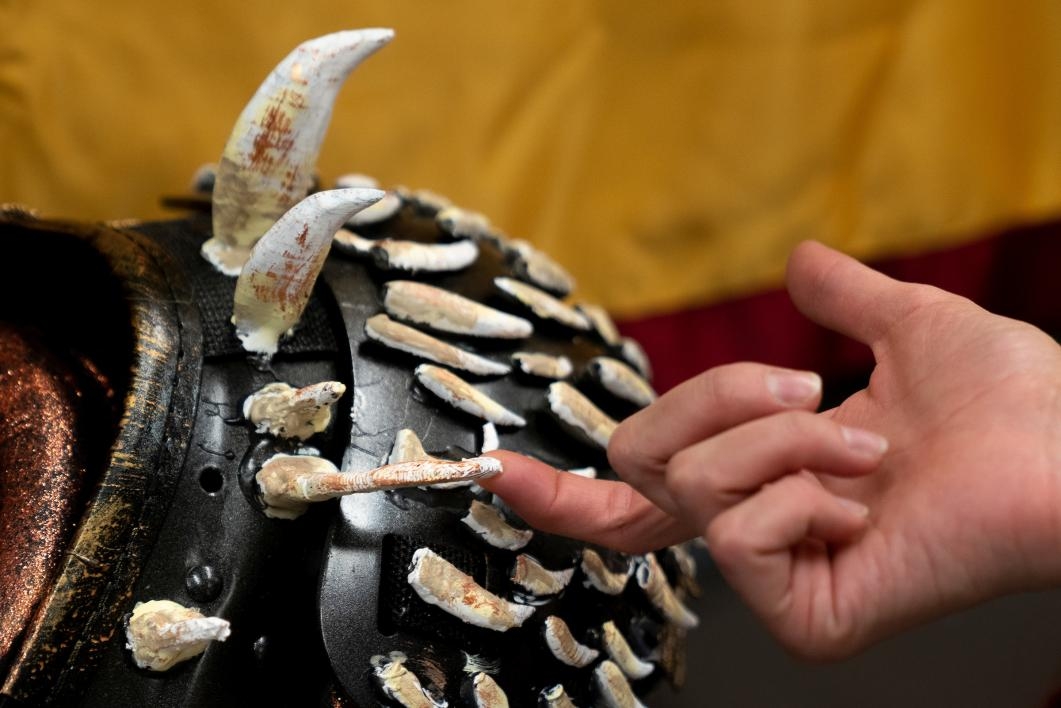It used to be that people would dress up once a year at Halloween, but the world of cosplay has opened new opportunities for people to create intricate, elaborate costumes to wear year-round. Arizona State University has several resources for making extravagant costumes — including professional help.
Sarah Lankenau, clinical assistant professor of costume technology in the School of Film, Dance and Theatre, is holding a workshop on Friday from 2 to 4 p.m. to teach makeup techniques. The free workshop is open to anyone and will be in the Hayden Library mkrspace on the Tempe campus, where Lakenau will answer questions about using the technology there to create costumes.
“I feel like the idea of what is costume and what is performance has really expanded,” said Lankenau, who taught a workshop on costume wig styling at the space earlier this month.
“With the maker movement and the emergence of these makerspaces, it’s become such an open and collaborative community.”
Cosplay has driven interest in costuming, along with activities like the Renaissance Fair and Jane Austen societies. Next month, Phoenix Fan Fusion (formerly Phoenix Comic Con) will draw hundreds of costume-wearing attendees.
Students in ASU’s costume classes become as proficient in using vinyl-cutters and 3D printers as they do sewing machines — all of which are available in the Hayden mkrspace to anyone in the ASU community. Lankenau said that the costume shop in the Herberger Institue for Design and the Arts will get its own 3D printer next year, but it’s important for students to know about the resources available on campus.
Students used digital fabrication to create the costumes for the recent production of “Ajax,” a Greek tragedy.
“I emphasize to my students that they should use technology to solve a problem,” she said. For example, one student used the vinyl cutter to create an intricate “feather” design that would have taken many hours to do by hand.
“I try to impress upon the students that if you let the fact that you haven’t done something keep you from trying it, you’re really missing out on all the fun,” she said.
Besides 3D printing, the Hayden mkrspace also includes 3D scanning; a WACOM tablet, which allows digital capture of hand-drawn images; and a variety of electronics, according to Victor Surovec, program coordinator for the mkerservices, who will staff Hayden Library’s booth at Phoenix Fan Fusion.
“There was a time you did have to be in a profession to have the skill set to run some of this equipment, but now, the usability of some of this stuff has gotten to a level where I teach a 6-year-old to design and print in 3D,” he said.
Lankenau will hold a workshop on “Digital Fabrication for Costumes” from June 6 to 8 on software basics, how to access hardware, types of digital fabrication projects, how to make simple digital files for fabric printing, and 3D printing. Participants can attend for one day or all three days.
Top image: Sarah Lankenau, clinical assistant professor of costume design, shows an intricate costume that was created using a vinyl cutter. Photo by Marcus Chormicle/ASU Now
More Science and technology

ASU-led space telescope is ready to fly
The Star Planet Activity Research CubeSat, or SPARCS, a small space telescope that will monitor the flares and sunspot activity of low-mass stars, has now passed its pre-shipment review by NASA.…

ASU at the heart of the state's revitalized microelectronics industry
A stronger local economy, more reliable technology, and a future where our computers and devices do the impossible: that’s the transformation ASU is driving through its microelectronics research…

Breakthrough copper alloy achieves unprecedented high-temperature performance
A team of researchers from Arizona State University, the U.S. Army Research Laboratory, Lehigh University and Louisiana State University has developed a groundbreaking high-temperature copper alloy…



